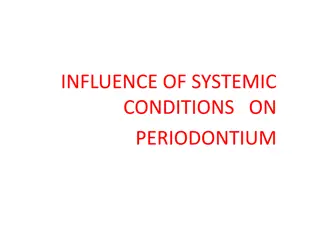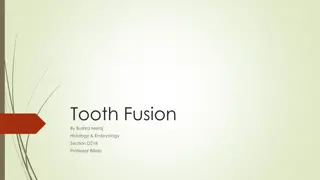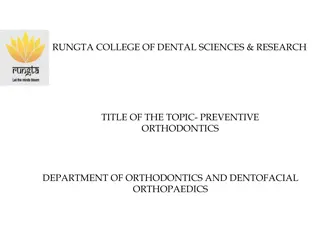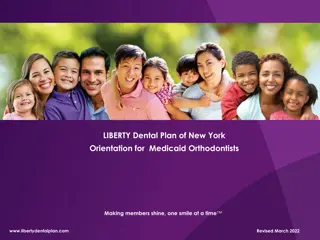Europe Clear Aligners Market to be Worth $5.43 Billion by 2030
The growth of this market is driven by factors such as the increasing prevalence of malocclusion, product launches and approvals, advancements in dental technology, and a rising interest in aesthetic dentistry. However, the high cost of clear aligners restrain the market's growth.\n\n
5 views • 4 slides
Understanding Classification of Malocclusion in Orthodontics
Occlusion refers to the alignment of teeth when the jaws are closed. Ideal occlusion is rarely found in nature, while normal occlusion entails a smooth alignment of teeth. Malocclusion, on the other hand, reflects variations in how upper and lower teeth come together. This classification of malocclu
6 views • 40 slides
Projects Asia-Pacific Clear Aligners Market to Reach $5.24 Billion by 2030
The growth of this market is attributed to several factors, including the rising prevalence of malocclusion, advancements in dental technology, and a growing interest in aesthetic dentistry. However, the lack of reimbursement policies restrains the market's growth.\n\n
0 views • 2 slides
Europe Clear Aligners Market Appliocation: to be Worth $5.43 Billion by 2030
Malocclusion is the third most common oral health problem globally, following periodontal disease and tooth decay. According to the European Journal of Pediatric Dentistry 2020 data, between 2009 and 2019, the global prevalence of malocclusion was 56%. Africa had the highest prevalence (81%), follow
0 views • 4 slides
Influence of Systemic Conditions on Periodontium
Systemic diseases, disorders, and conditions can affect the periodontium by impairing the host's barrier function and immunity, leading to periodontal destruction. Endocrine disorders like diabetes mellitus and hormonal changes, as well as female sex hormones during puberty, menstruation, pregnancy,
0 views • 20 slides
Understanding Tooth Fusion in Dentistry
Tooth fusion is the merging of two tooth germs into a single large crown, which can be complete or incomplete depending on the developmental stage. It can affect primary dentition, mostly incisors and canines. Differentiating fusion from gemination involves examining the pulp chambers. Causes may in
0 views • 9 slides
Understanding Malocclusion: Epidemiology, Terminologies, and Orthodontic Concepts
This comprehensive content delves into the epidemiology of malocclusion, covering determinants, distribution, measurement, prevalence, and global versus Indian scenarios. It explains key terminologies like overjet, overbite, and crossbite, along with concepts such as centric occlusion and orthodonti
0 views • 90 slides
Preventive Orthodontics in Dental Sciences Research
Preventive orthodontics in the Department of Orthodontics and Dentofacial Orthopedics involves educating patients and parents, controlling caries, managing deciduous dentition, and more to preserve normal occlusion. Procedures include patient education, caries control, and care of deciduous dentitio
0 views • 26 slides
Medicaid Orthodontic Services Overview in New York
Medicaid orthodontic services in New York are provided for members with severe physically handicapping malocclusion. Orthodontic treatment must meet medical necessity criteria, including demonstrating functional difficulties, developmental anomalies, facial trauma, or psychological health needs. Ser
0 views • 17 slides








